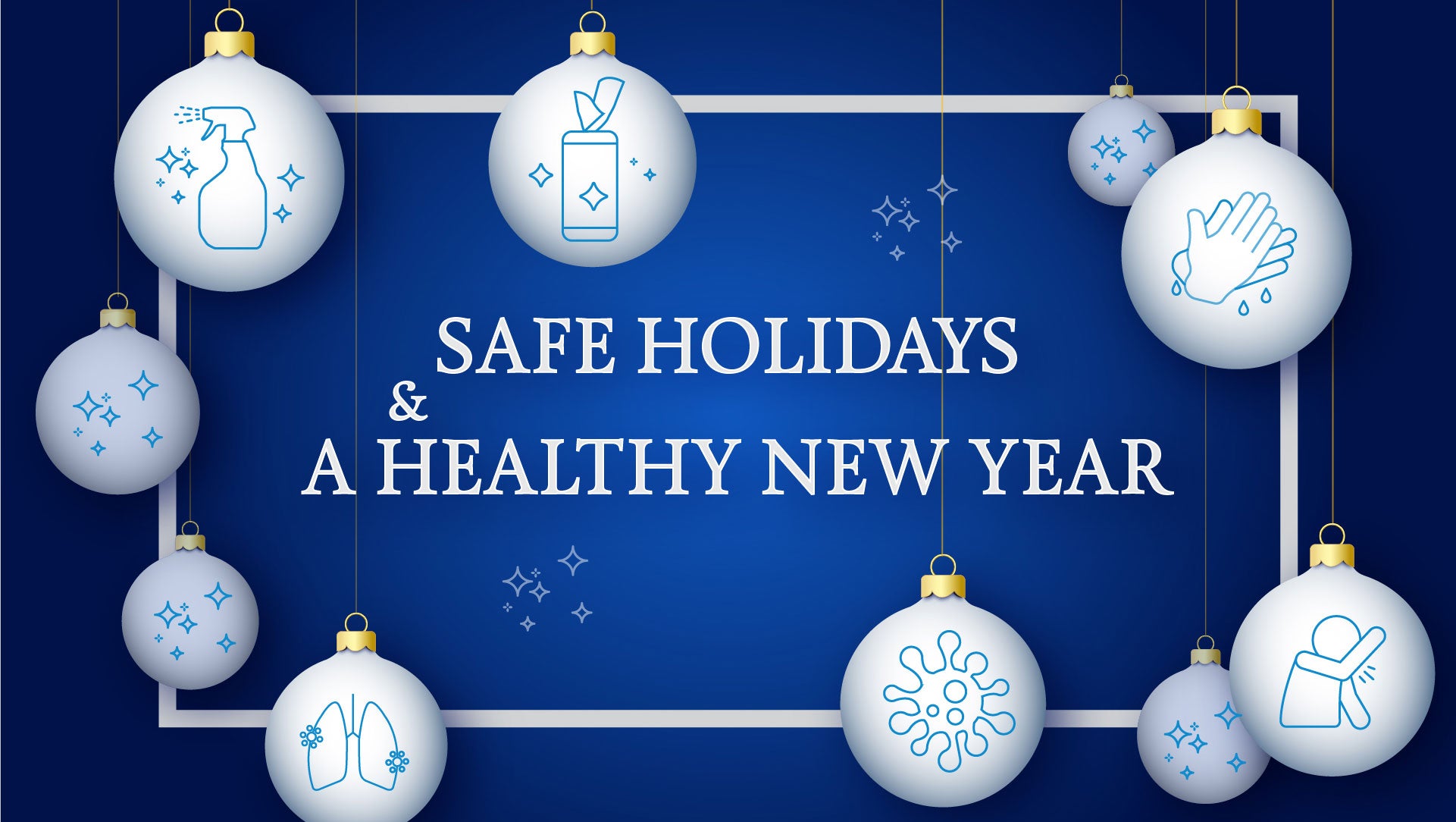Respiratory Illnesses Outlook and Prevention in a Neat Little Package

As winter decks the halls in holiday cheer, the season also brings the risk of respiratory infection. From the common cold to more serious threats like influenza and RSV, taking proactive measures to safeguard spaces against respiratory threats must be a top priority. Professional cleaners act as a first line of defense against illness for occupants, so their health and ability to clean and disinfect is critical. So, let’s unwrap some strategies to help prevent the spread of respiratory viruses this winter and ensure we are prepared for what may come our way after we return from the holidays.
Cases of Respiratory Illness Are Trending in the Wrong Direction
Respiratory virus season has started a month early this year. The CDC estimates that there have already been at least 2.6 million illnesses.1 We do not usually see this many infections until late December. Nearly half of the country is seeing moderate to high levels of influenza-like illness, with that expected to grow in the coming months culminating to a later peak than last season.1 Increased illness will continue to place a significant burden on hospitals and clinics, healthcare workers, and vulnerable populations.
Don’t Overlook Factors Influencing Risk of Illness
As we move further into respiratory virus season, there are several factors that could increase illnesses. These include coming indoors for activities and gatherings, an uptick in holiday travel, and fewer people taking precautions like wearing masks.
When people spend more time indoors in close contact with others, the risk for germs to cause illness increases. Likewise, travel has the effect of moving germs from place to place and person to person. Global travel has increased by as much as 40% from 2022.2 This is evident as November 26 was the busiest day ever for air travel3 and 50% of adults say they plan to travel for the holidays.4 Additionally, prevention behaviors have mostly returned to pre-pandemic patterns with people taking fewer precautions to avoid spreading germs. According to a recent survey, half of adults say they do not plan on taking precautions to limit the spread of COVID-19 this winter.5 This is concerning because many respiratory viruses can result in severe disease and hospitalization. Currently, only 36% of adults have received the annual flu vaccine — the lowest flu vaccine uptake in the last 5 years.6
Implement Practical Tips to Safeguard Shared Spaces
For those managing public spaces, people’s return from the holidays may mean an increased spread of respiratory viruses. To prepare, consider adopting the following strategies focused on preventing common illnesses by incorporating cleaning and disinfection best practices.
- Plan Ahead
- Establish well-defined roles and responsibilities for cleaning and disinfecting.
- Ensure both new and seasoned staff are provided with high-quality training like CloroxPro HealthyClean®.
- Identify high-touch surfaces where germs may lurk and plan to disinfect these surfaces regularly.
- Choose the Right Disinfectants
- Ensure disinfectant products are EPA-registered with efficacy claims against common winter germs including norovirus, influenza, and RSV.
- Use ready-to-use (RTU) products to efficiently tackle germ hot spots like classrooms, offices, and other common areas. RTU products are a more effective solution for fast and efficient disinfecting.
- Empower Occupants to Help
- Place signage to encourage hand washing, respiratory hygiene, and staying home when ill.
- Supply occupants with the necessary products, like disinfecting wipes, which are effective against respiratory viruses on personal and shared surfaces in as little as 15 seconds.
With an increase in respiratory illness, ensure you are prepared with products and protocols to meet the needs of the facilities you serve. As you plan for the holiday festivities, be sure that preventing respiratory illness makes it on your list, this is one thing you will absolutely want to check twice.
References
1. CDC. Weekly U.S. Influenza Surveillance Report – Key Updates for Week 48, ending December 2, 2023. [Internet. 2023 [cited 2023 Dec 8]. Available from: https://www.cdc.gov/flu/weekly/index.htm
2. Smialek J. America’s Foreign Vacations Tell Us Something About the U.S. Economy. The New York Times [Internet]. 2023 Jul 15 [cited 2023 Nov 28]; Available from: https://www.nytimes.com/2023/07/15/business/economy/inflation-travel-economy.html
3. Roeloffs MW. Sunday After Thanksgiving Was Busiest Day Ever for U.S. Airports—What It Could Mean for December’s Holiday Travelers [Internet]. Forbes. 2023 [cited 2023 Nov 29]. Available from: https://www.forbes.com/sites/maryroeloffs/2023/11/27/sunday-after-thanksgiving-was-busiest-day-ever-for-us-airports-what-it-could-mean-for-decembers-holiday-travelers/?sh=4167e0212eb9
4. El Issa E. 2023 Holiday Travel Report [Internet]. NerdWallet. 2023 [cited 2023 Nov 29]. Available from: https://www.nerdwallet.com/article/travel/2023-holiday-travel-report
5. Sparks G, Kirzinger A, Kearney A, Valdes I, Hamel L. KFF COVID-19 Vaccine Monitor November 2023: With COVID Concerns Lagging, Most People Have Not Gotten Latest Vaccine and Half Say They Are Not Taking Precautions This Holiday Season [Internet]. KFF. 2023 [cited 2023 Nov 29]. Available from: https://www.kff.org/coronavirus-covid-19/poll-finding/vaccine-monitor-november-2023-with-covid-concerns-lagging-most-people-have-not-gotten-latest-vaccine/
6. Influenza vaccine doses distributed, United States [Internet]. Cdc.gov. 2023 [cited 2023 Nov 27]. Available from: https://www.cdc.gov/flu/fluvaxview/dashboard/vaccination-doses-distributed.html






